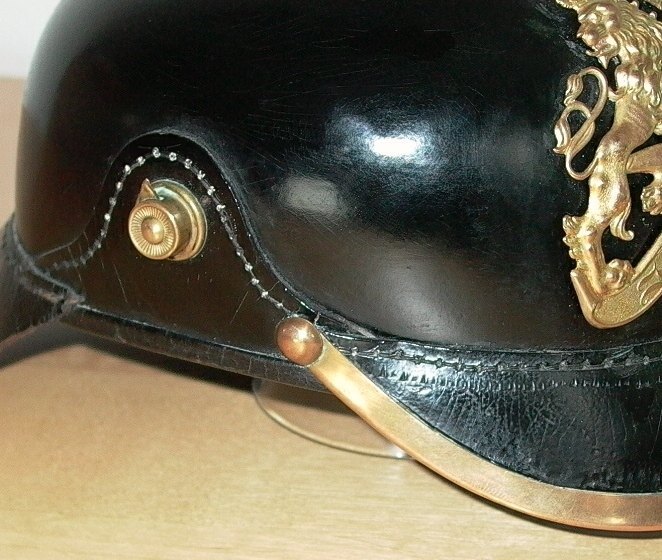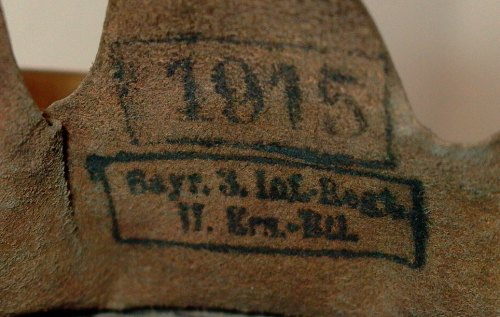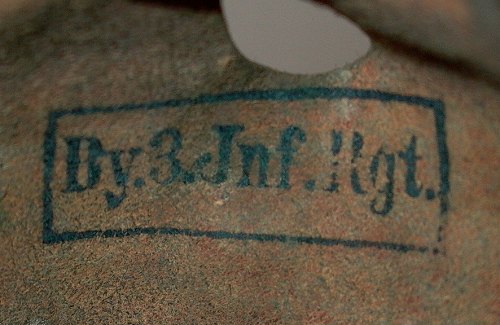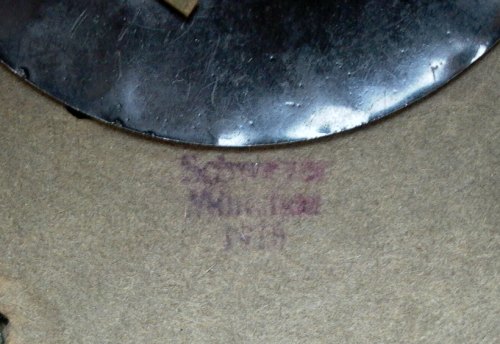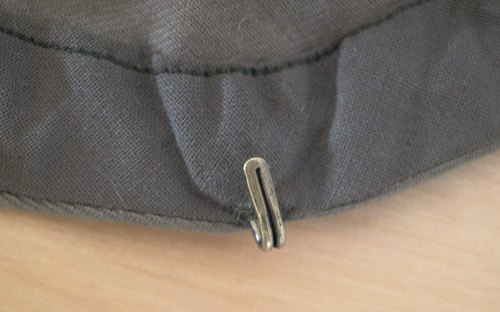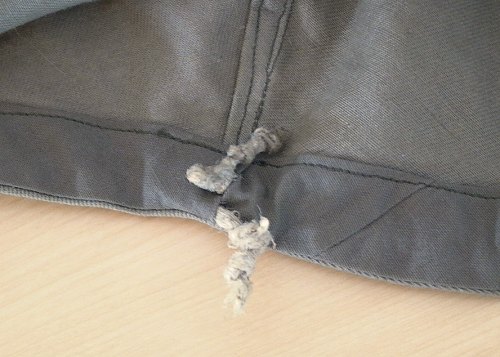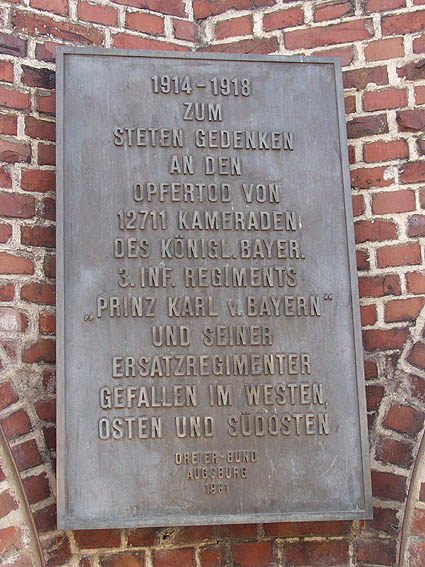I could not resist this one 
 .
.
A felt ersatz helmet lacquered on the outside. It is stamped by the 3rd Bavarian inf reg., 2nd ersatz batl. The stamps are placed in the liner, most likeley because the insides of the visors are blackened. There is also a makers mark on the felt near the disc (I believe the second line reads "München", followed by the year) and the name "Eberl Math." is written with pencil on the inside. The letters "WS" have been sewn onto the liner too - any ideas about this?
The condition is really nice with no wear visible, the shell is glossy outside and the fittings have very lightly darkened. I won't attempt any restoration and will just leave the helmet as it is.
The helmet also came with the Überzug. I guess my next headache will be about finding a matching chin strap..
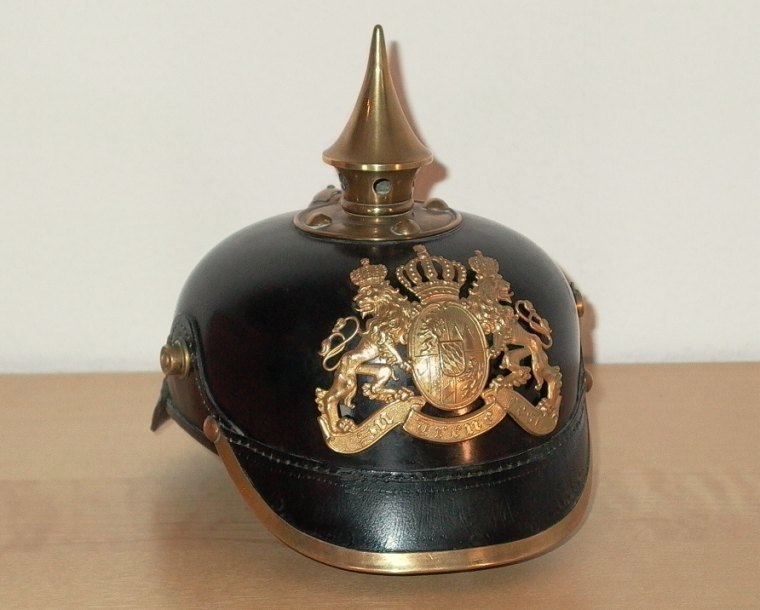
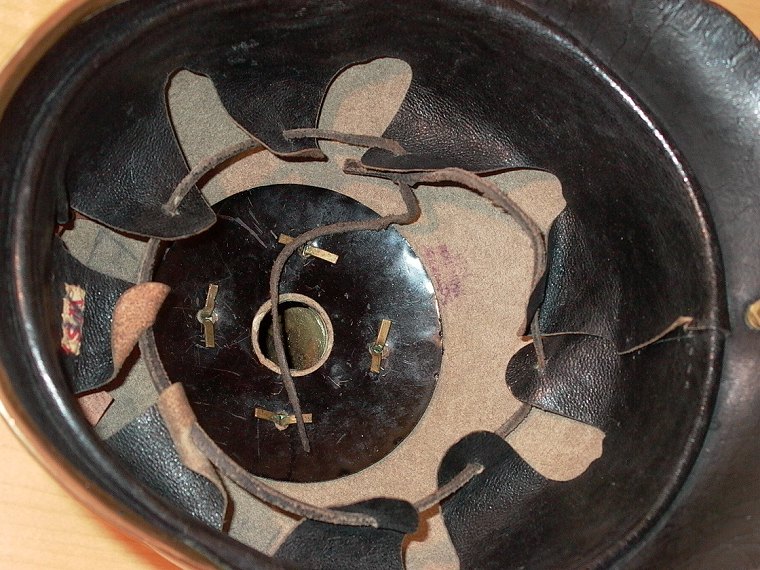
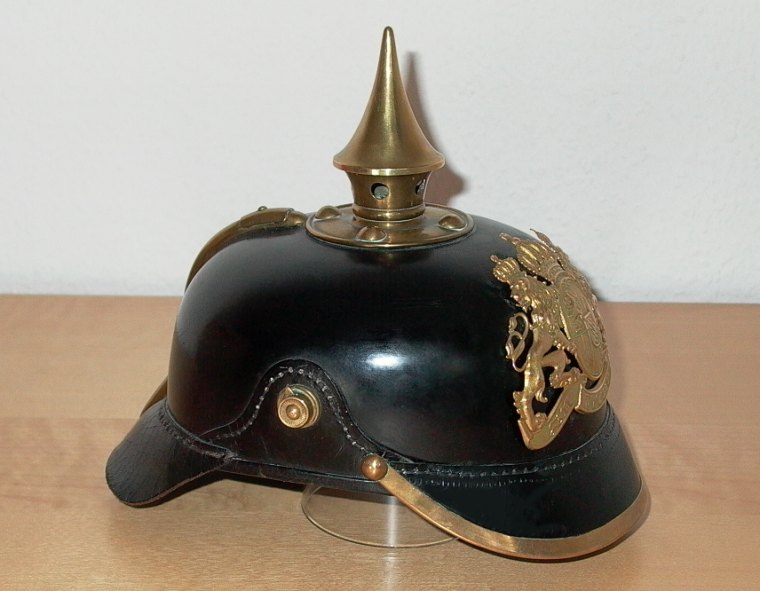
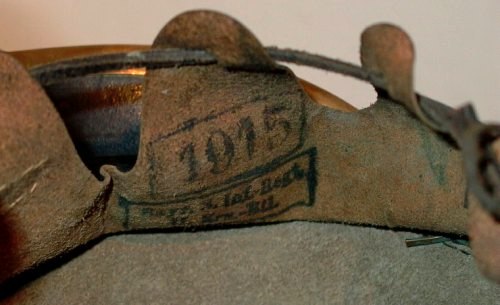
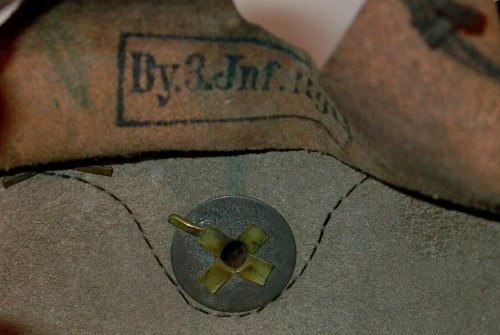
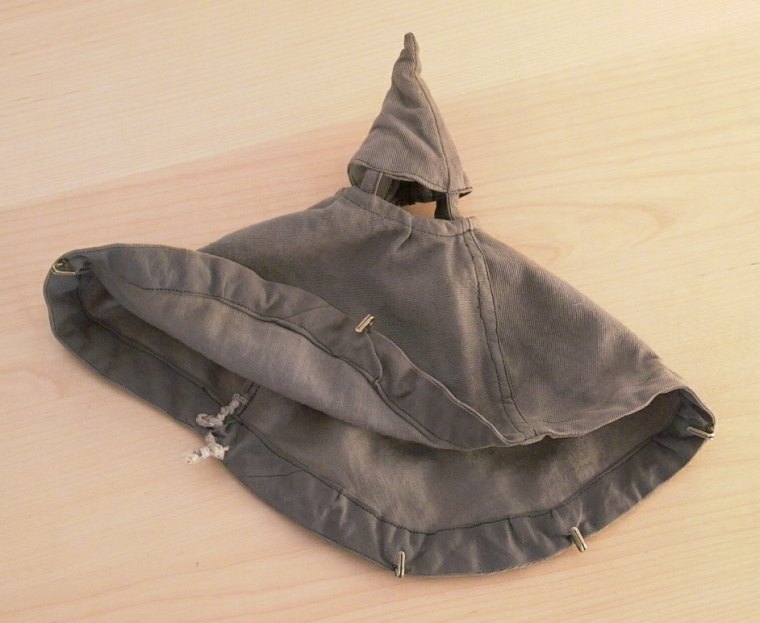
A felt ersatz helmet lacquered on the outside. It is stamped by the 3rd Bavarian inf reg., 2nd ersatz batl. The stamps are placed in the liner, most likeley because the insides of the visors are blackened. There is also a makers mark on the felt near the disc (I believe the second line reads "München", followed by the year) and the name "Eberl Math." is written with pencil on the inside. The letters "WS" have been sewn onto the liner too - any ideas about this?
The condition is really nice with no wear visible, the shell is glossy outside and the fittings have very lightly darkened. I won't attempt any restoration and will just leave the helmet as it is.
The helmet also came with the Überzug. I guess my next headache will be about finding a matching chin strap..







